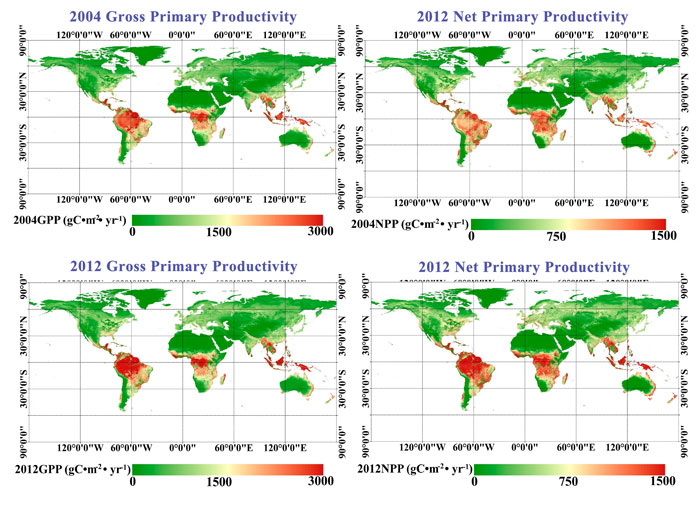| Tweet | Follow @co2science |
Paper Reviewed
Yu, T., Sun, R., Xiao, Z., Zhang, Q., Liu, G., Cui, T. and Wang, J. 2018. Estimation of global vegetation productivity from Global Land Surface Satellite data. Remote Sensing 10: 327, doi:10.3390/rs10020327.
Seemingly more and more often these days various persons and/or organizations are claiming that the world's ecosystems are collapsing because of global warming and its attendant host of climate catastrophes. But is this assertion correct?
One critical method by which this hypothesis can be validated is by examination of recent trends in both global gross and net ecosystem primary productivity. And that is exactly what Yu et al. (2018) did in a study published in the journal Remote Sensing. Working with MODIS satellite data, the team of seven researchers analyzed the spatial and temporal variation in terrestrial gross primary productivity (GPP) and net primary productivity (NPP) over the period 2004 to 2012, during which time climate alarmists claim the earth experienced unprecedented global warming.
And what did their analysis reveal?
Figure 1 below depicts both the GPP and NPP values for the terrestrial biosphere in both 2004 and 2012. According to Yu et al., total GPP increased from 108.84 Pg C in 2004 to 119.73 Pg C in 2012, representing a linear increase of 1.25% per year, or 10% between 2004 and 2012. Similarly, global NPP increased from 61.15 Pg C in 2004 to 69.53 Pg C in 2012, rising 1.7% per year for a total increase of 13.7% across the eight year period. Furthermore, the authors report that, in general, GPP and NPP values in 2012 were higher than that observed in 2004 "at all land cover types."
The above enhancements in GPP and NPP indicate the health of the terrestrial biosphere has been improving over time, which observation has also been noted in several other studies of the subject archived on our website under the heading Biospheric Productivity (Global: The Recent Past). The significance of such observations cannot be overstated; despite the occurrence of many real (and imagined) assaults on Earth's vegetation over the past few years and decades, including wildfires, disease, pest outbreaks, deforestation, and supposedly unprecedented climatic changes in temperature and precipitation, global terrestrial GPP and NPP is not diminishing. And, as evidenced in several other studies of the subject (see the reviews posted here), it increase or improvement is primarily caused by growth-related benefits associated with earth's rising atmospheric CO2 concentration.

Figure 1. Global 1 km gross (left column) and net (right column) primary productivity in 2004 (top row) and 2012 (bottom row). Source: Yu et al. 2018.




